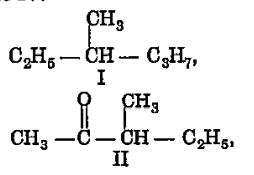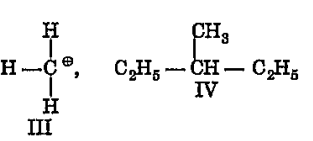Some suspensions are given
I. Fog
II . Air
III . Blood
IV . Paint
(V) .Aerosol spray
Among the following ,true suspensions are .
I ,II and III
III, IV and V
I,II and V
I,II and IV
The correct Answer is:A
Similar Questions
Among the following four structures I to IV.


It is true that.
View SolutionIn given questions, three statements are given followed by four conclusions numbered I,II,III and IV. You have to take the given statements to be true even if they seem to be at variance with commonly known facts and then decide which of the given conclusions logically follows from the given statements disregarding commonly known facts.
Statements: No tree is fruit. All fruits are stones. All stones are rains.
Conclusions: I. No stone is tree.
II. No rain is tree
III. Some rains are fruits.
IV. Some rains are trees.
(a) Only either II or III and I follows
(b) None follows
(c) Only either II or IV, and III follows
(d) All follows
(e) None of these.
View Solution
Knowledge Check
In given questions is based on a set of given propositions I to IV. Select the best answer to each of these questions:
I : All P are Q
II : Some P are not Q
III : Some, but not all, P are Q
IV : No P is Q.
Considered only by themselves, all of the following pairs of statements might both be false but could not both be true exceptAI, II and III could all be false.BI, II and III could all be true.CII, III and IV could all be false.DII , III and IV could all be true.In the following question below are given some statements followed by some Conclusions. Taking the given statements to be true even if they seem to be at variance from commonly known facts, read all the Conclusions and then decide which of the given Conclusion logically follows the given statements.
Statements :
I. Some cups are plates.
II. All spoons are blue.
III. No plate is spoon.
Conclusions :
I. Some cups are not spoon.
II. Some plates are not blue.
III. Some cups are not blue.
IV. Some blue are not plates.AOnly Conclusions I, III and IV follow.BOnly Conclusions II and IV follow.COnly Conclusions II, III and IV follow.DOnly Conclusions I and IV follow,In the following question below are given some statements followed by some Conclusions. Taking the given statements to be true even if they seem to be at variance from commonly known facts, read all the Conclusions and then decide which of the given Conclusion logically follows the given statements.
Statements:
I. Some knives are spoons.
II. Some forks are knives.
III. No fork is green.
Conclusions :
I. Some spoons are forks.
II. Some knives are green.
III. Some green are not knives.
IV. Some knives are not green.AOnly Conclusion IV followsBOnly Conclusion III followsCOnly Conclusion III and I followDOnly Conclusion land II follow
You have to take the given statements to be true even if they seem to be at variance with commonly known facts and then decide which of the given conclusions logically follow(s) from the given statements
Statements: Some books are novels
All novels are dishes
Conclusions: I. Some books are dishes
II. Some books are not dishes
III. Some dishes are novels
IV)Some dishes are not novels
1) Either I or II follows
2) Either II or IV follow
3)Either I or II, and III or IV follows
4) I, II and III follow
5) Can't say
View SolutionIn given questions, three statements are given followed by four conclusions numbered I,II,III and IV. You have to take the given statements to be true even if they seem to be at variance with commonly known facts and then decide which of the given conclusions logically follows from the given statements disregarding commonly known facts.
Statements: Some papers are cats.
All cats are bats.
No bat is horse.
Conclusions: I. Some papers are horses.
II. No horse is cat.
III. Some bats are papers.
IV. All papers are bats.
(a) Only I and II follows
(b) Only II and III follows
(c) Only III and IV follows
(d) Only I and IV follows
(e)All follows.
View SolutionYou have to take the given statements to be true even if they seem to be at variance with commonly known facts and then decide which of the given conclusions logically follow(s) from the given statements
Statements: All books are pens.
All books are tigers
Conclusions: I. Some pens are books
II. Some pens are tigers
III. Some tiger are pens
IV)Some pens are not tiger
1) Only I and III follow
2) Only II and III follow
3)Only I follows
4) I, II and III follow
5) I and either II or IV follows
View SolutionYou have to take the given statements to be true even if they seem to be at variance with commonly known facts and then decide which of the given conclusions logically follow(s) from the given statements
Statements: Some desks are pens.
No pen is a paper
Conclusions: I. Some desks are papers
II. Some desks are not papers
III. No desk is a paper
IV)No paper is a pen
1) Only II and IV follow
2) Either I or II follow
3)Either I or III follows
4) Only II and III follow
5) Only II, III and IV follow
View SolutionSome statements are given below about ethers. They can be regarded as
I. alkyl derivatives of alcohols
II. dialkyl derivatives of water
III. anhydrides of monohydric alcohols
IV. alkoxy derivatives of alkanes
Among the above, the true statements are
View Solution
